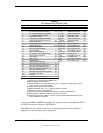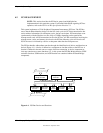
Chapter 4 System Support
Compaq Deskpro 4000N and 4000S Personal Computers
First Edition - September 1997
4-2
4.2 PCI BUS OVERVIEW
NOTE:
This section describes the PCI bus in general and highlights bus
implementation in this particular system. For detailed information regarding PCI bus
operation, refer to the PCI Local Bus Specification Revision 2.1.
This system implements a 32-bit Peripheral Component Interconnect (PCI) bus. The PCI bus
uses a shared address/data bus design. On the first clock cycle of a PCI bus transaction the bus
carries address information. On subsequent cycles, the bus carries data. PCI transactions occur
synchronously with the Host bus at a rate of up to 33 MHz, depending on the speed of the
microprocessor used. All I/O transactions involve the PCI bus. All ISA transactions involving the
microprocessor, cache, and memory also involve the PCI bus. Memory cycles will involve the
PCI if the access is initiated by a device or subsystem other than the microprocessor.
The PCI bus handles address/data transfers through the identification of devices and functions on
the bus (Figure 4-1). A device is defined as a component or slot that resides on the PCI bus. A
function is defined as the end source or target of the bus transaction. A device (component or
slot) may contain one or more functions (i.e., in this system the PCI/ISA Bridge function, EIDE
controller function, USB function, and ACPI function are contained within the South Bridge
component).
Figure 4–1.
PCI Bus Devices and Functions
32-Bit PCI Bus 0
ISA Bus
Host/PCI
Bridge Function
PCI/ISA Bridge
Function
EIDE Cntlr.
Function
PCI Connector
Host Bus
Graphics
Controller
NIC
Function
USB
Function
ACPI Cntlr.
Function


















